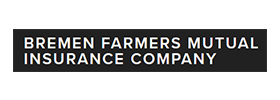Auto insurance is a necessity for all drivers, but for teenagers, it often comes with a hefty price tag. If you’re a parent of a teen driver or a young driver yourself, you may have noticed that insurance premiums for teenage drivers are substantially higher than those for more experienced motorists. But why is this the case?
Knowledge is power, and with AHI Group, we’ll delve into the factors contributing to the higher auto insurance rates faced by teen drivers. Understanding these factors is not only essential for parents and young drivers but for anyone interested in the dynamics of insurance pricing. Discover ways to mitigate the steeper pricing for teen’s auto insurance by reading on.
Auto Insurance Basics
Auto insurance is a financial safeguard that protects drivers from the potentially exorbitant costs associated with accidents, vehicle damage, and medical expenses. In the states auto insurance rates are influenced by several factors, including the driver’s age, driving history, the type of vehicle insured, and the chosen coverage options.
Teen drivers, however, often find themselves on the wrong side of the affordability scale due to their limited experience and the higher perceived risk associated with this age group. To understand why teens face higher insurance rates, it’s crucial to dive deeper into the factors that drive these premiums. Which factors are used and to what amount varies by insurer, but generally you can expect insurance rates to vary based on age, gender, driving record, postal code, and more.
Teen Driving Statistics
The statistics behind the driving behavior and accident rates of teens paints a telling picture. While teens make up a relatively small percentage of all licensed drivers, they are disproportionately involved in accidents. This higher accident rate, combined with the associated insurance claims, contributes to the elevated insurance rates for young drivers in the state. Even if you, as a teen driver, are an otherwise good driver who has never been involved in an accident, simply being a younger driver can inflate your rates.
Factors Contributing to Higher Rates for Teen Drivers:
Several factors play a role in the elevated insurance rates for teen drivers:
- Lack of driving experience. Drivers with more experience behind the wheel will generally be considered less prone to accidents and therefore be charged less.
- Risk-taking behavior, which is said to be common among young drivers. Even if you personally don’t take many risks, you can still face high rates simply by being young.
- Choice of vehicle and coverage options. Comprehensive coverage and high-performance vehicles are a costly combination.
- Past accidents. Having accidents while being young can skyrocket your rates.
- How often you drive. Young drivers who drive frequently (more than 6,000mi/year) may face higher rates than those who drive 3,000mi/year or less.
Understanding these elements is essential for both teens and their parents when shopping for auto insurance.
Ways for Teen Drivers to Lower Insurance Costs
There are strategies that teen drivers can employ to reduce their insurance expenses. Enrolling in defensive driving courses can help young drivers acquire essential skills and demonstrate their commitment to safe driving, potentially earning them discounts from insurance providers. Good student discounts are also prevalent among insurers, rewarding teenagers who maintain strong academic records. Finally, comparison shopping for insurance quotes is a valuable tactic for finding the most competitive rates. By exploring multiple options, teen drivers and their parents can identify affordable coverage that still meets their needs.
Graduated Driver Licensing (GDL) Programs
Kansas, like many states, has implemented Graduated Driver Licensing (GDL) programs aimed at gradually introducing teens to the responsibilities of driving. GDL programs typically include learner’s permits, intermediate licenses, and full, unrestricted licenses. These programs have a significant impact on insurance rates. Teen drivers with learner’s permits are generally less expensive to insure compared to those with full licenses, as they are under strict supervision. As drivers progress through the GDL phases, their insurance rates may change to reflect their increased driving experience. Understanding how GDL programs interact with insurance pricing is crucial for teen drivers and their parents when planning for the cost of coverage.
For similar programs in other states, discuss with an AHI agent. Each state has their own defensive driving programs and eligibility opportunities to lower rates through education.
Parental Involvement
Parents play a crucial role in helping teen drivers navigate the complex world of auto insurance. By setting a good example through their own responsible driving habits, parents can impart essential lessons to their teenagers. Moreover, parents can guide their teens in choosing appropriate vehicles and coverage levels, ensuring that they strike a balance between affordability and protection. Parental involvement extends to reinforcing safe driving behaviors and emphasizing the consequences of risky actions behind the wheel. By working together, parents and teens can better manage insurance costs and promote safety on the road.
Understanding why teen drivers face higher auto insurance rates is not only about economics; it’s about empowering young drivers and their parents to make informed decisions. As we’ve explored the factors contributing to these rates, from inexperience to state regulations, it becomes clear that proactive measures can mitigate these costs. Graduated Driver Licensing programs (and similar) offer a structured path to safer driving and more affordable insurance. Ultimately, by fostering a culture of responsible driving and informed insurance choices, we can pave the way for safer roads and more affordable insurance premiums for teen drivers in Kansas. Reach out to AHI Group for more information.























